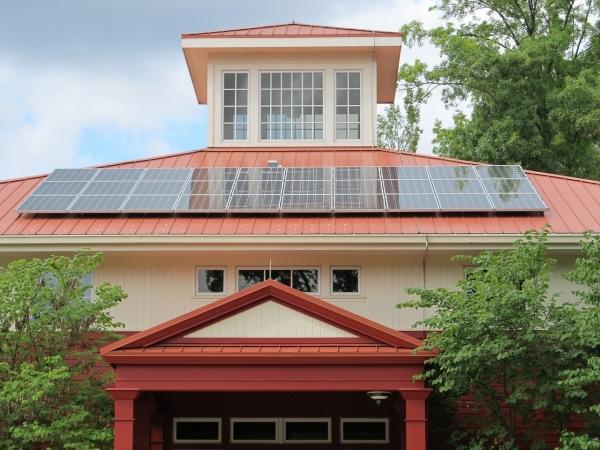Disposal of Solar Panels: Ensuring Appropriate Recycling of Materials

The past two decades, the energy sector has been focused on renewable energy sources, their importance in the future because of environmental factors, and how well these energy sources can be integrated with the grid. Looking at renewable technologies from a cost-effective point of view, solar panels are the next big thing, be it household rooftops or solar mega power plants. A decade ago, not many households would install rooftop solar panels since they were neither affordable nor economical, but today a lot more can. And the pace at which the technology is advancing in manufacturing rooftop solar panels, it is going to be cheaper for households to install rooftop panels instead of buying electricity from the grid. These improvements will lead to a reduction in price and an increase in efficiency.
By 2020, the U.S. Environmental Protection Agency (EPA) had aimed to increase the use of renewable energy in each state and did so successfully. A minimum amount of customer load is set to be provided from renewable energy sources, and for this both the market and the technology development must be stimulated to provide the nation with renewable energy that is economically competitive and affordable. According to the EPA, California and Colorado are required to supply a part of their load from renewable energy resources with a minimum percentage of 33% and 30% respectively. By 2026, Illinois is required to have a minimum of 25% of their load be from renewable energy resources.
Solar energy is a renewable and green energy, so it is important that the end-of-life disposal of the solar panels does not affect its popularity as a green technology. The solar panels currently used in the market are made of a wide variety of electronic compositions, and each type must be disposed of appropriately. Currently 80 to 85% of solar panels are water-based silicon, but with technological advancements, panels made of amorphous silicon, cadmium telluride, and copper indium gallium di-selenide are increasing due to lower prices and better efficiency. With the wide variety of metals and by-products, comes a wide variety of ways in which these can pollute if not disposed of properly. And with the increase in installation of solar panels in the next decade comes an increase in the waste stream. The quality, reliability, and failure rates of the solar panels will determine the timing and size of the waste, as well as how urgent the need for a proper end-of-life disposal procedure will be at that point in time.
The end-of-life disposal procedures were previously based on water-based silicon and cadmium telluride panels, and their toxicity was calculated using a small sample, but with newer compositions there is a lack of knowledge about the potential toxicity.
The best economical procedures in use right now are landfills, which are popularly linked with the problem of leaching, and the leaching of the metals and compounds in the solar PV panels seems to be based on the pH level of the landfills. Metals and metalloids in solar panels are more mobile in an acidic environment, which could occur in a municipal solid waste landfill. Aluminum, which is used as a contact material for the silicon panels, leaches in large quantities. This directly affects the people living in the nearby areas or near the recycling plants. Due to leaching of such metals in the soil, solar PV panels are classified as a hazardous waste by the EPA. An entire industry which prides itself on being green and sustainable sure doesn’t seem very green when not disposed of properly.
The technology to recycle solar PV waste is not yet very sophisticated, but with current developments it is possible to recycle more than 90% of the solar panel. But recycling solar panels is considered a high-risk sector for research and development as there is an unpredictability in the value of the resulting raw materials, which is hindering the growth of this sector. There are some recycling techniques which focus on materials present in large and valuable quantities, such as glass and aluminum. But these recycling technologies dispose of other materials such as silver, tin, and silicon because it is not cost-effective to recycle them.
Some initiatives need to be provided by the government to protect this emerging recycling sector from market fluctuations as the green industry is going to develop tremendously no matter what. Manufacturing take-back programs, tax incentives, eco-tax on customers, recycling charge added to selling price, and other programs can be implemented to make the recycling of the panels cost-effective and implementable.
An example of such an incentive is in the Czech Republic, where if a company sells solar panels they are required to donate to a national fund which collects and recycles the panels.
For our economy to be healthy, there must be a cycle of production and consumption. If either of the two halts, the economy will also come to a standstill. With the constant use of natural resources, in the very near future there is going to be a dearth of resources, so for a sustainable future we must keep the production-consumption wheel moving. We must keep the wheel moving in such a way that end-of-life waste is not seen as waste, but a valuable resource to continue the cycle.
References:
1. Math H. Bollen & Fainan Hassan Integration of Distributed Generation in the Power System, John Wiley & Sons
2. IEEE Paper: Decolorization of Methyl Orange with Mesoporous Materials made from Spent Solar Panel Chang-Tang Chang Corresponding Author, Department of Environmental Engineering, Professor National I-Lan University, I-Lan City, Taiwan
3. http://www.dsireusa.org/resources/detailed-summary-maps/
4. How do you recycle a solar-panel? By Hamza Tahiri Founder, Photocycle Industries
5. IEEE Paper: Photovoltaic waste characterization with environmental considerations Kayla Collins and Annick Anctil Clemson University, Anderson, SC 29625, United States